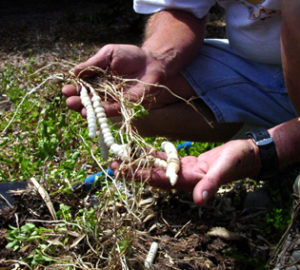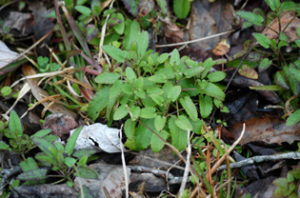Controlling Florida Betony
go.ncsu.edu/readext?656024
en Español / em Português
El inglés es el idioma de control de esta página. En la medida en que haya algún conflicto entre la traducción al inglés y la traducción, el inglés prevalece.
Al hacer clic en el enlace de traducción se activa un servicio de traducción gratuito para convertir la página al español. Al igual que con cualquier traducción por Internet, la conversión no es sensible al contexto y puede que no traduzca el texto en su significado original. NC State Extension no garantiza la exactitud del texto traducido. Por favor, tenga en cuenta que algunas aplicaciones y/o servicios pueden no funcionar como se espera cuando se traducen.
Português
Inglês é o idioma de controle desta página. Na medida que haja algum conflito entre o texto original em Inglês e a tradução, o Inglês prevalece.
Ao clicar no link de tradução, um serviço gratuito de tradução será ativado para converter a página para o Português. Como em qualquer tradução pela internet, a conversão não é sensivel ao contexto e pode não ocorrer a tradução para o significado orginal. O serviço de Extensão da Carolina do Norte (NC State Extension) não garante a exatidão do texto traduzido. Por favor, observe que algumas funções ou serviços podem não funcionar como esperado após a tradução.
English
English is the controlling language of this page. To the extent there is any conflict between the English text and the translation, English controls.
Clicking on the translation link activates a free translation service to convert the page to Spanish. As with any Internet translation, the conversion is not context-sensitive and may not translate the text to its original meaning. NC State Extension does not guarantee the accuracy of the translated text. Please note that some applications and/or services may not function as expected when translated.
Collapse ▲One of the most prolific weeds that are likely in your own yard is Florida Betony (Stachys floridana). Don’t let the pretty pink flowers fool you: Florida Betony Florida Betony will entrench itself and spread like its invasive cousins in the mint family.
The usual weed-pulling doesn’t eradicate this plant because it builds an underground energy storage organ (tuber). See photo to understand how this weed got its nickname “rattlesnake root.” If the leafy shoot is snatched off, the plant simply regrows from the tuber.

Tubers of Florida Betony that look like a rattlesnake, hence the name rattlesnake weed
Photo by UGA Extension
Florida Betony grows well in our cooler months of spring and fall (and mild winters). By March, it may be well-established. One method of control is to dig up (and dispose of) these weeds, spading up as much of the tuber as possible. Mulching helps, too, but it will still most likely re-emerge in the fall. According to the 2020 NC Agricultural Chemicals Manual, recommended chemical control includes herbicides containing one of the following chemicals active ingredients: glyphosate, florasulam, or penoxsulam. Use only according to label directions. In turf, atrazine is also recommended for use in the fall; most turf grasses are unaffected by atrazine, with the exception of tall fescue.

Florida Betony (Stachys floridana)
Photo by UGA Extension
After using chemical treatment, you may need to re-apply a month later to control this weed.
Written by Meg Rawls, Master Gardener℠ Volunteer




